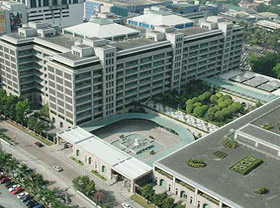
Resilient Asia poised to lead recovery from global slowdown, says ADB
The Update to ADB’s flagship annual economic publication, Asian Development Outlook (ADO) 2009, released today, forecasts economic expansion in developing Asia to come in at 3.9% in 2009, up from the 3.4% expected in March when the ADO 2009 was released. In 2010, the growth projection is likewise upgraded to 6.4% from 6.0%. Stronger growth in East Asia and South Asia underpinned the improved prospects.
"Despite worsening conditions in the global economic environment, developing Asia is poised to lead the recovery from the worldwide slowdown," said ADB Chief Economist Jong-Wha Lee.
Firm action by many governments and central banks, the relatively healthy state of financial systems prior to the global crisis, and the rapid turnaround in the region’s larger, less export-dependent economies, all enhanced developing Asia’s growth prospects. However, there are notable divergences in the outlook across subregions and across economies.
Economic growth in East Asia is upgraded to 4.4% in 2009, from the 3.6% projected in ADO 2009. In the People’s Republic of China, aggressive monetary easing and the massive fiscal stimulus package rolled out by the Government bolstered the region’s largest economy, which is now expected to grow by 8.2% in 2009 and 8.9% in 2010, up from the March forecast of 7% and 8% respectively. A shallower contraction in the Republic of Korea is also expected on the back of effective fiscal stimulus measures. Meanwhile, the economies of Hong Kong, China and Taipei,China are likely to shrink more sharply on account of the severe drop in the demand for their exports.
Prospects for South Asia improved to 5.6% this year, up from the ADO 2009 forecast of 4.8% as the outlook for five of the eight subregional economies were upgraded. The subregion’s limited reliance on trade partly shielded it from the adverse effects of the global slump. Emerging signs of a recovery in private business confidence and a continued large fiscal stimulus announced in the July 2009 budget helped bolster India’s projected economic expansion to 6.0% this year, upgraded from 5% in March. Bleaker prospects are projected for the Maldives, on account of weak tourism receipts, and for Pakistan and Sri Lanka due to tight domestic demand and the weak global economy.
Aggregate growth in Southeast Asia is projected to slow to 0.1% this year, compared to expectations of 0.7% growth in ADO 2009. The more positive outlook for Indonesia and Viet Nam failed to offset the deteriorating prospects for the more open (Malaysia and Thailand) and smaller (Brunei Darussalam and Cambodia) economies in the subregion.
Projections for Central Asia are much bleaker now than in ADO 2009 due to lower commodity prices, a deeper downturn in the Russian Federation (the subregion’s main trade and financial partner), and weaker capital inflows, investments, and remittances. Growth is forecast to slow to 0.5% this year, compared to the March forecast of 3.9%. Kazakhstan’s economy is expected to shrink to -1.0% in 2009, as it grapples with a fallout from a banking crisis and lower oil prices.
Economic expansion in the Pacific Islands is slightly downgraded to 2.8% this year compared with 3.0% in ADO 2009, largely as a result of falling incomes from remittances and tourism.
"The improved regional outlook should not make developing Asian economies complacent. A protracted global slowdown or the hasty withdrawal of stimulus packages can degrade the region’s ongoing recovery," said Dr. Lee.
To develop more resilient economies, developing Asia should broaden the scope and structure of its openness. Reducing its vulnerability to external shocks requires policy makers to tackle the geographically unbalanced structure of its trade, capital flows, and movement of workers.
By promoting closer economic linkages within the region and a more balanced internal economic structure with a bigger role for domestic demand, policy makers in developing Asia will be able to achieve rapid yet stable growth for the region.
Asian Development Outlook, and Asian Development Outlook Update, are ADB’s flagship economic reports analyzing the economic conditions and prospects in Asia and the Pacific, and are issued in March and September, respectively.